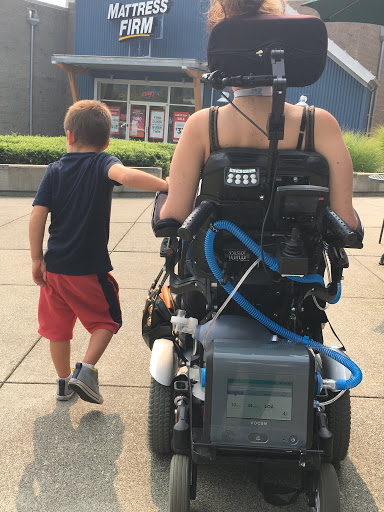Taking the time to find your ideal settings is worth the effort, because you will feel better and the benefits of using VOCSN over a traditional ventilator are countless!
I was discharged from the hospital in 2002 with a new life as a ventilator dependent quadriplegic. Although I knew that someday I would have to transition from the LTV 800 ventilator that I had been using since being discharged, I never expected the transition to occur so soon, or for the device to be VOCSN.
My previous attempts to use different ventilators over the past few years had ended in dismal failure. I was left terrified for what my life would be like if I would be trapped using a ventilator that made me feel horrible. When I was presented with the opportunity to trial VOCSN in June 2017, I was convinced I would, at best, be able to give the device a mediocre rating. However, I was utterly taken aback when I was not only impressed, but wanted a VOCSN for my own personal use.
 A few months after my trial, I was able to start using VOCSN. This positive first experience did not mean, however, that I simply had to transfer my old settings to VOCSN and was ready to go. In order to feel like my body was functioning optimally, we needed to adjust several settings including my tidal volume and inspiratory time. Finding the final "sweet spot" required a systematic process of trial and error, moving individual variables incrementally in both directions.
A few months after my trial, I was able to start using VOCSN. This positive first experience did not mean, however, that I simply had to transfer my old settings to VOCSN and was ready to go. In order to feel like my body was functioning optimally, we needed to adjust several settings including my tidal volume and inspiratory time. Finding the final "sweet spot" required a systematic process of trial and error, moving individual variables incrementally in both directions.
The take-home message is this: when switching to VOCSN, finding your ideal settings may require some patience and experimentation. Listed below are some tips for techniques that may be useful. Taking the time to find your ideal settings is worth the effort, because you will feel better and the benefits of using VOCSN over a traditional ventilator are countless!
Loa’s Tips for Transfering to a New Ventilator
- Utilize all the resources at your disposal. Different practitioners, clinicians and manufacturers may have different insights. Thus, a combination of advice may help guide you to the settings best fit for you.
- Take your time. Change one variable setting at a time (e.g. tidal volume, breath rate, etc.). Make changes incrementally both up or down from your initial settings and allow some time to pass before making the next incremental adjustment in order to allow your body to acclimate.
- Each ventilator is different. For example, an LTV can deliver +10% of -10% of the set delivery and still be within spec. That means, if you set a tidal volume of 500 mL, the LTV could deliver between 450 mL and 550 mL. Do not just assume that you can transfer your exact settings across different devices. Remember that finding the ideal settings may require multiple adjustments – this will require time and patience.

The views expressed by Loa are not necessarily the view of the Ventec Life Systems, its members or the clinical board. These blog posts are the personal experiences of Loa. The blog posts are not intended to provide clinical advice or training related to VOCSN. Always consult a physician or trained clinician prior to using VOCSN. Please refer to the VOCSN Clinical and Technical Manual for detailed instructions, including indications and contraindications for use. VOCSN is available by prescription only.